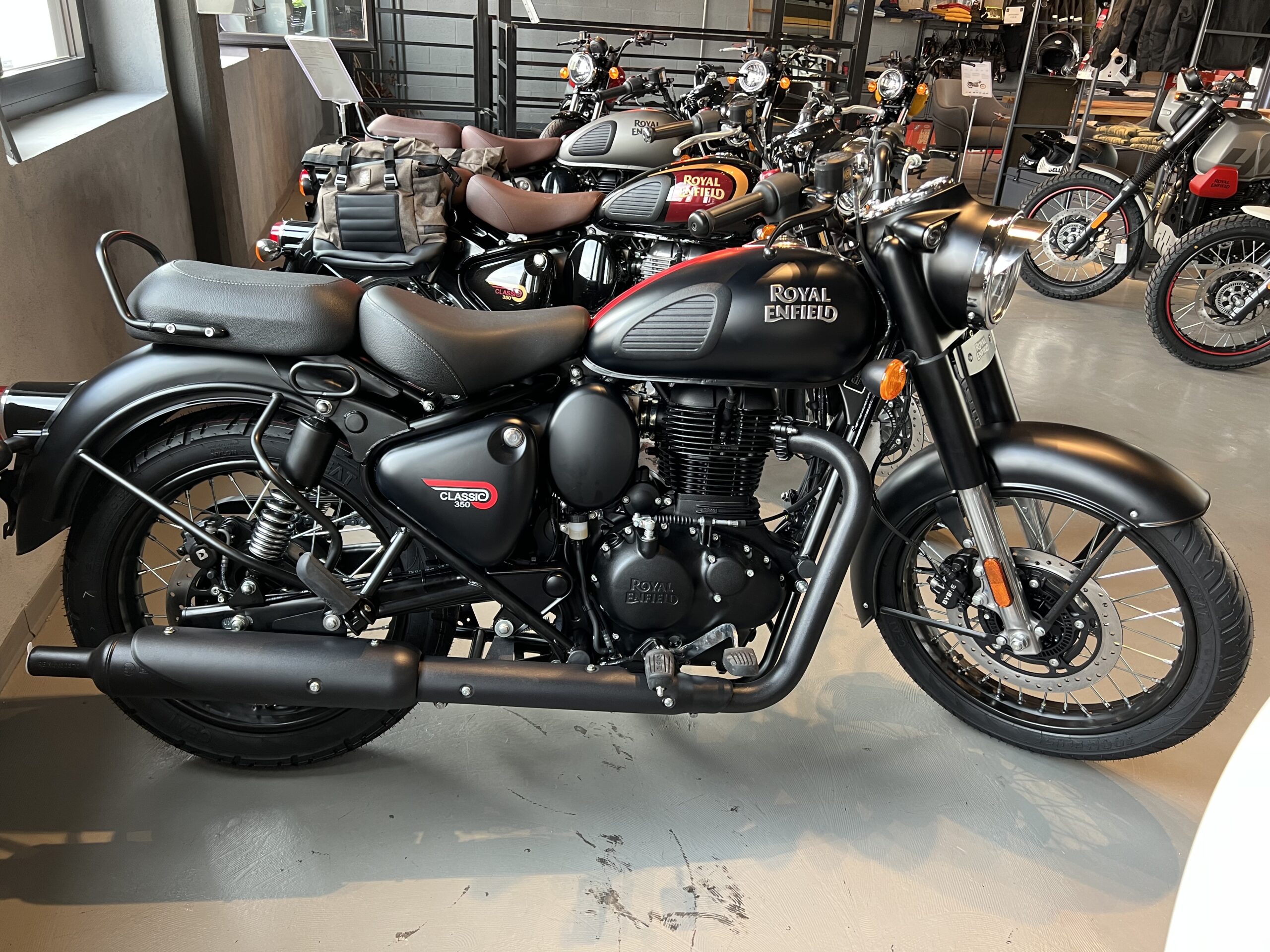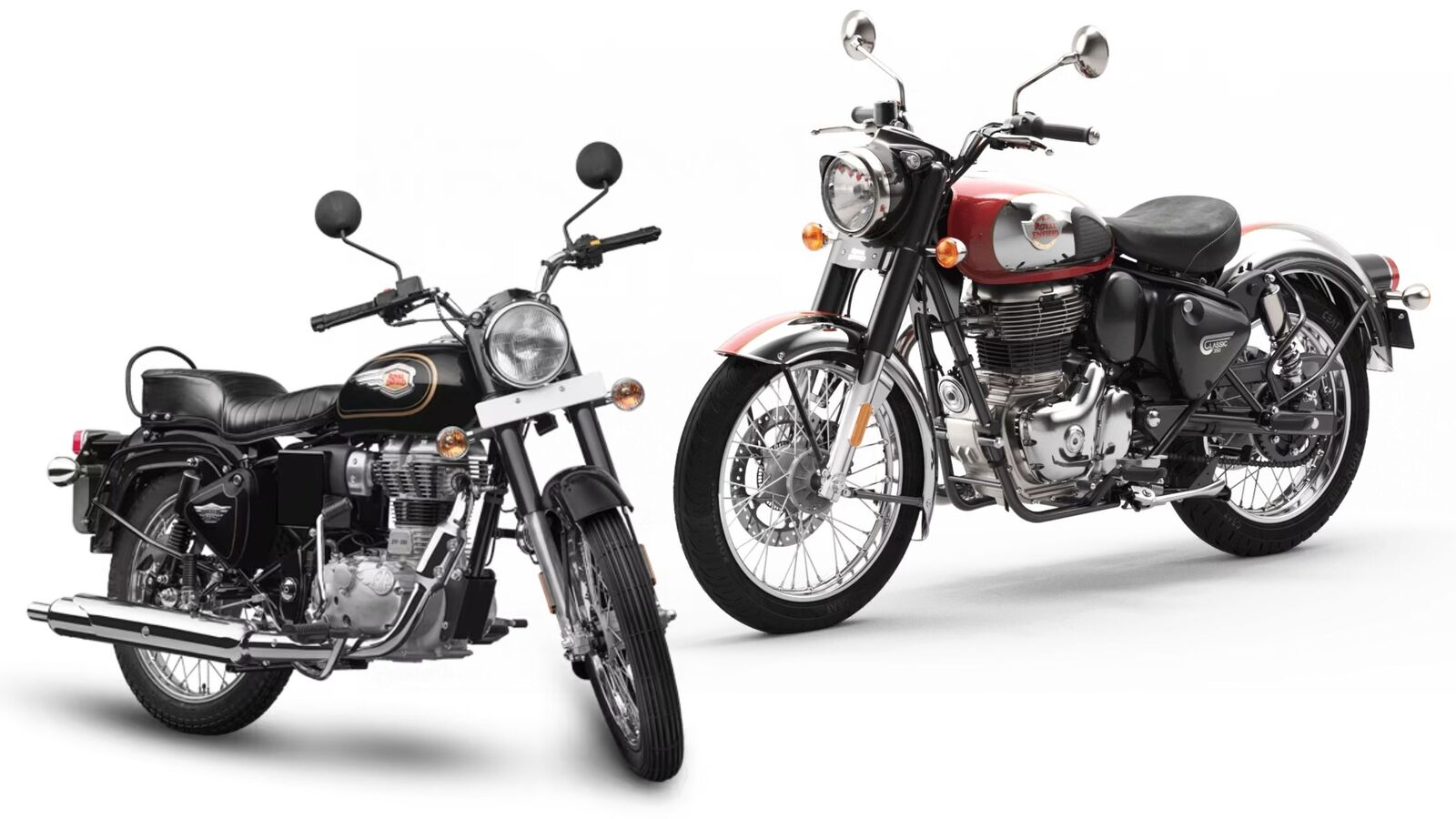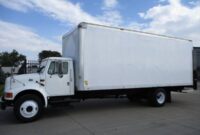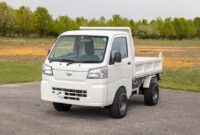Classic Chevy 4×4 Trucks For Sale: Your Ultimate Buyer’s Guide pickup.truckstrend.com
For generations, Chevrolet trucks have been synonymous with rugged capability, enduring style, and American ingenuity. Among these, the classic Chevy 4×4 trucks hold a special place in the hearts of enthusiasts, collectors, and those simply seeking a vehicle with character that stands apart from the modern crowd. These aren’t just old vehicles; they are rolling pieces of history, symbols of adventure, and testaments to a bygone era of straightforward, robust engineering.
The market for classic Chevy 4×4 trucks — ranging from the iconic C/K series pickups to the versatile K5 Blazers and spacious Suburbans — is vibrant and diverse. Whether you’re a seasoned collector looking for a meticulously restored showpiece, an off-road enthusiast dreaming of a capable trail rig, or someone seeking a unique daily driver that turns heads, understanding the nuances of these vehicles is crucial. This comprehensive guide will navigate you through the world of classic Chevy 4x4s for sale, offering insights, practical advice, and everything you need to know to make an informed purchase.
Classic Chevy 4×4 Trucks For Sale: Your Ultimate Buyer’s Guide
Why Invest in a Classic Chevy 4×4? The Enduring Allure
The decision to purchase a classic vehicle is often driven by passion, and classic Chevy 4x4s ignite that passion for several compelling reasons:
- Timeless Design and Style: From the sleek lines of the "Action Line" 1967-1972 models to the boxy, purposeful stance of the "Square Body" 1973-1987 trucks, classic Chevy 4x4s possess an aesthetic appeal that transcends fleeting trends. Their designs are instantly recognizable and evoke a sense of nostalgia and rugged charm.
- Robust Durability and Reliability: Built in an era before excessive electronics and complex computer systems, these trucks are renowned for their straightforward, durable mechanicals. With proper maintenance, their engines, transmissions, and transfer cases can last for hundreds of thousands of miles, making them surprisingly reliable for their age.
- Unmatched Off-Road Prowess: Equipped with solid axles, capable transfer cases (like the NP205 or NP208), and often robust V8 engines, these trucks were designed for utility and challenging terrain. Many remain highly capable off-road vehicles, easily modified for even greater performance.
- Community and Culture: Owning a classic Chevy 4×4 connects you to a passionate community of fellow enthusiasts. Car shows, online forums, and local clubs provide opportunities to share knowledge, find parts, and celebrate the shared love for these iconic machines.
- Potential for Appreciation: While not all classic vehicles are guaranteed investments, well-maintained or professionally restored classic Chevy 4x4s, particularly popular models like the 1967-1972 C/K series or early K5 Blazers, have shown a steady increase in value over time. They represent a tangible asset that can be enjoyed while potentially appreciating.
- Simplicity of Maintenance and Modification: Their less complex nature makes them more accessible for DIY mechanics. Parts availability, both OEM and aftermarket, is excellent, making repairs and custom modifications relatively straightforward compared to many other classic vehicles.

Iconic Generations & Models to Look For
Chevrolet’s 4×4 truck lineage is rich and varied. Here are some of the most sought-after classic generations and models:
- First Generation C/K Series (1960-1966): Often referred to as "Chevy Apache" or "C-series/K-series," these trucks are distinctive with their "eyebrow" hood design. The K models (4×4) are rarer and highly prized for their unique styling and robust chassis.
- Second Generation C/K Series (1967-1972) "Action Line": Arguably the most popular and aesthetically beloved generation. Known for their clean lines, coil-sprung rear suspension (on 2WD, but still influenced the 4WD design), and comfortable cabs. This era also introduced the legendary K5 Blazer (1969-1972), a short-wheelbase SUV that has become an icon.
- Third Generation C/K Series (1973-1987) "Square Body": The quintessential classic Chevy truck for many. With its angular, purposeful design, long production run, and wide variety of trims and powertrains, the Square Body K-series (K10, K20, K30) pickups, K5 Blazers (through 1991, later renamed Blazer/Yukon), and Suburbans offer immense versatility and customization potential. They are durable, easy to work on, and have vast aftermarket support.
- Fourth Generation GMT400 Series (1988-1998): While newer, the early GMT400s are quickly gaining classic status. They offered more refined driving dynamics, independent front suspension on most 4x4s (some heavy-duty models retained solid axles), and fuel injection (TBI/Vortec), making them more practical for daily driving while still retaining a rugged aesthetic.


Key Considerations Before Buying Your Classic Chevy 4×4
Purchasing a classic vehicle requires a different mindset than buying a new one. Here’s what to consider:
-
Define Your Purpose:
- Show Truck: Demands meticulous restoration, often to concourse standards. Highest price tag.
- Weekend Cruiser/Daily Driver: Needs to be reliable, comfortable, and presentable. May tolerate minor imperfections.
- Off-Road Rig: Focus on mechanical integrity, suspension, tires, and drivetrain. Cosmetic flaws are less critical.
- Project Vehicle: Be prepared for significant time, effort, and financial investment. Only for the truly dedicated.
-
Budgeting:
- Purchase Price: Varies wildly based on model, condition, and rarity.
- Restoration/Repair Costs: Almost every classic will need something. Budget for unexpected repairs, rust remediation, paint, interior, and mechanical overhauls. A good rule of thumb is to budget at least 25-50% of the purchase price for initial sorting.
- Maintenance: Older vehicles require more frequent checks and preventative maintenance.
- Insurance: Classic car insurance is often cheaper than modern car insurance but has specific requirements.
-
Condition Assessment (The Most Crucial Step):
- Rust: The #1 enemy. Check common rust areas: cab corners, rocker panels, floorboards, bed supports, fenders, inner fenders, firewall, and most importantly, the frame. Surface rust is manageable; structural rust is a major red flag and costly to repair.
- Engine & Drivetrain: Look for leaks, listen for unusual noises (knocks, ticks, grinding). Check fluid levels and clarity. Ensure the 4×4 system engages smoothly (transfer case, front hubs).
- Suspension & Steering: Check for worn bushings, shocks, tie rods, and steering box play.
- Brakes: Test thoroughly. Are they spongy? Do they pull?
- Electrical: Test all lights, gauges, wipers, heater fan, and radio. Faulty wiring can be a nightmare.
- Interior: Assess seat condition, dashboard cracks, headliner, door panels, and carpet.
- Documentation: A clear title is essential. Service records, original owner’s manuals, and build sheets add value and provide history.
-
Originality vs. Restomod:
- Original/Numbers Matching: Highly valued by purists and collectors. Commands a premium.
- Restomod (Restored + Modernized): Combines classic looks with modern comfort and performance (e.g., fuel-injected engine, modern suspension, AC, power steering/brakes). Often more practical for daily driving and can be highly sought after. Decide which appeals more to your use case.
Where to Find Your Dream Classic Chevy 4×4
The hunt for the perfect classic Chevy 4×4 can be an adventure in itself:
- Online Marketplaces:
- Specialized Classic Car Sites: Bring a Trailer, ClassicCars.com, Hemmings Motor News, Autotrader Classics. These often feature higher-quality, well-documented vehicles.
- General Classifieds: eBay Motors, Facebook Marketplace, Craigslist. Can yield bargains but require extreme caution due to prevalence of scams and misrepresented vehicles.
- Dedicated Forums & Clubs: Many online forums and Facebook groups are dedicated to specific Chevy truck generations (e.g., "Square Body Fanatics"). Members often sell their trucks within the community.
- Specialized Dealerships & Brokers: These dealers focus exclusively on classic vehicles, often offering restored or well-vetted examples. They typically come with a higher price tag but offer peace of mind.
- Auctions: Mecum, Barrett-Jackson, RM Sotheby’s, and local auction houses. Exciting but require quick decision-making and often attract top-dollar bids. Know the fees!
- Local Classifieds & Word-of-Mouth: Sometimes the best deals are found close to home, through local papers, bulletin boards, or simply by asking around.
The Buying Process: A Step-by-Step Guide
- Research Thoroughly: Understand the models, their common issues, and their current market values based on condition.
- Set a Realistic Budget: Include not just the purchase price but also expected repairs, registration, and insurance.
- Initial Contact & Questions: Ask detailed questions about the vehicle’s history, condition, maintenance, and any known issues. Request extensive photos and videos.
- In-Person Inspection (Crucial): If possible, always inspect the vehicle yourself. Bring a knowledgeable friend or mechanic. Look for signs of rust, previous accidents, shoddy repairs, and mechanical issues.
- Professional Pre-Purchase Inspection (PPI): For any significant purchase, hire an independent, reputable mechanic specializing in classic vehicles to perform a thorough inspection. This small investment can save you thousands.
- Test Drive: Drive the truck both on pavement and, if appropriate, in 4×4 mode. Listen for noises, feel for vibrations, check steering and braking.
- Negotiate Wisely: Be prepared to walk away if the price isn’t right or if issues are discovered.
- Secure Financing & Insurance: Research classic car insurance providers (e.g., Hagerty, Grundy) well in advance.
- Complete Paperwork: Ensure the title is clean and matches the VIN on the vehicle. Understand the bill of sale and any local transfer requirements.
- Plan for Transport: If buying out of state, arrange for reliable shipping.
Common Challenges & Solutions
- Rust: The most pervasive issue. Solution: Thorough inspection, professional rust repair or panel replacement, and rustproofing after purchase.
- Parts Availability: While generally good for Chevy, specific trim pieces or highly specialized components can be hard to find. Solution: Utilize aftermarket suppliers (LMC Truck, Classic Industries), salvage yards, and online forums for rare parts.
- Mechanical Issues: Older vehicles are prone to wear and tear. Solution: Budget for comprehensive mechanical overhaul if necessary. Find a trusted mechanic experienced with vintage vehicles, or be prepared to learn DIY repairs.
- Cost Overruns: Restoration projects notoriously go over budget. Solution: Set a realistic budget from the start, add a contingency fund (20-30%), and prioritize repairs.
- Fraud/Misrepresentation: Unfortunately, the classic car market has its share of unscrupulous sellers. Solution: Due diligence, in-person inspection, PPI, and trusting your gut. If a deal seems too good to be true, it probably is.
Price Guide for Classic Chevy 4×4 Trucks For Sale
The price of a classic Chevy 4×4 truck varies dramatically based on numerous factors: year, model, specific trim, engine, transmission, originality, modifications, overall condition, and current market demand. The table below provides a general estimated price range for common models based on their condition. These are estimates only and can fluctuate significantly.
| Model / Generation | Condition: Project/Parts ($) | Condition: Good Driver ($) | Condition: Nicely Restored ($) | Condition: Show Quality ($) |
|---|---|---|---|---|
| 1960-1966 C/K Series (K) | $5,000 – $15,000 | $20,000 – $40,000 | $45,000 – $70,000 | $75,000+ |
| 1967-1972 C/K Series (K) | $8,000 – $20,000 | $30,000 – $60,000 | $65,000 – $100,000 | $100,000 – $150,000+ |
| 1969-1972 K5 Blazer | $10,000 – $25,000 | $40,000 – $80,000 | $85,000 – $150,000 | $150,000 – $250,000+ |
| 1973-1987 "Square Body" K10/K20 | $4,000 – $12,000 | $15,000 – $35,000 | $40,000 – $70,000 | $75,000 – $100,000+ |
| 1973-1991 K5 Blazer / Suburban | $5,000 – $15,000 | $20,000 – $45,000 | $50,000 – $85,000 | $90,000 – $120,000+ |
| 1988-1998 GMT400 K1500/K2500 | $3,000 – $10,000 | $10,000 – $25,000 | $30,000 – $50,000 | $55,000 – $75,000+ |
Note: Prices for "Show Quality" and highly desirable, rare configurations (e.g., factory big block, specific trim levels, low mileage survivors) can significantly exceed the top end of these ranges. Conversely, trucks with major rust or significant mechanical issues might be found below the "Project/Parts" range. Always consult recent sales data and professional appraisals for accurate valuations.
Frequently Asked Questions (FAQ)
Q1: What’s the best classic Chevy 4×4 for a beginner?
A1: The 1973-1987 "Square Body" C/K series trucks (K10, K20, K30) are often recommended for beginners. They are relatively affordable, have vast aftermarket parts support, are mechanically straightforward, and there’s a huge community for assistance.
Q2: Are parts hard to find for these trucks?
A2: Generally, no. Chevrolet produced millions of these trucks, and the aftermarket for classic Chevy parts is one of the largest in the industry. Companies like LMC Truck, Classic Industries, Summit Racing, and others specialize in reproduction and performance parts. Some specific trim pieces or very rare options can be harder to source, but core mechanical components are readily available.
Q3: How much does it cost to restore one?
A3: Restoration costs vary widely. A full, professional, frame-off restoration can easily cost $50,000 to $100,000 or more, often exceeding the final market value of the truck. A driver-quality restoration might be $15,000 to $30,000. DIY restoration can significantly reduce labor costs but still requires substantial investment in parts and materials.
Q4: Can I daily drive a classic Chevy 4×4?
A4: Yes, many people daily drive them, especially well-maintained or restomodded examples. However, be prepared for less fuel efficiency, different braking characteristics (often drum brakes or early disc brakes), and the need for more frequent checks and maintenance compared to a modern vehicle. Upgrades like fuel injection, power steering/brakes, and modern AC can greatly enhance daily drivability.
Q5: What’s the difference between a C/K and a K series?
A5: In Chevrolet’s nomenclature, ‘C’ denotes a two-wheel-drive (2WD) truck, and ‘K’ denotes a four-wheel-drive (4WD) truck. So, when looking for a classic Chevy 4×4, you’ll be specifically searching for ‘K’ series models (e.g., K10, K20, K30, K5 Blazer, K5 Suburban).
Q6: What are the most common rust spots on these trucks?
A6: Common rust areas include: cab corners, rocker panels, lower fenders, door bottoms, floorboards, bed sides, bed crossmembers, and the frame (especially near spring hangers and body mounts). K5 Blazers are also prone to rust around the rear wheel wells and tailgate.
Q7: Should I look for a carbureted or fuel-injected engine?
A7: Most classic Chevy 4x4s (pre-1987.5 for trucks, pre-1992 for K5/Suburban) came with carbureted engines. Later Square Bodies (1987.5-1991) and early GMT400s (1988-1998) featured Throttle Body Injection (TBI) or Vortec fuel injection. Fuel-injected engines generally offer better cold starting, fuel economy, and reliability, while carbureted engines are simpler to work on for many DIY enthusiasts. Many owners convert carbureted engines to aftermarket EFI for improved performance.
Conclusion: Driving a Legend
Owning a classic Chevy 4×4 truck is more than just possessing a vehicle; it’s an experience. It’s about connecting with history, enjoying the roar of a V8, and commanding a machine built for purpose. From the timeless aesthetics to their enduring mechanical robustness, these trucks continue to captivate enthusiasts.
The journey to finding your perfect classic Chevy 4×4 for sale requires patience, research, and a keen eye for detail. By understanding the different generations, knowing what to look for during inspection, and setting a realistic budget, you can navigate the market with confidence. Whether you dream of conquering trails, cruising to car shows, or simply enjoying the unique character of a vintage truck, a classic Chevy 4×4 offers an unparalleled blend of style, capability, and American heritage. Embrace the adventure, and soon you could be behind the wheel of your very own rolling legend.



